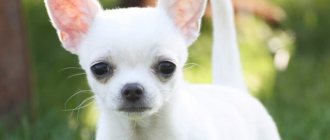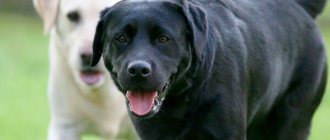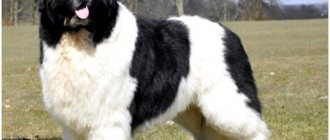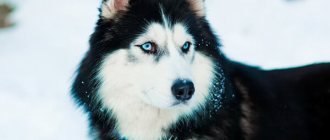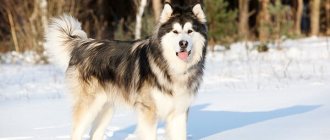Pure black coloring is rare in Chihuahuas.
Dogs with this coat color look very elegant, especially if they have a small white tie-like marking on their neck. But the most common Chihuahuas are black and tan.
But due to the fact that most breeders prefer to breed dogs of other, more fashionable colors, people who decide to get a black Chihuahua may have to spend a lot of time looking for a pet.
History of appearance
The first coal-black dogs were already found among the ancestors of the Chihuahua, called Techichi. These small, rather short-legged and stocky dogs, unable to bark, lived in Mexico back in the 15th century BC.
NOTE!
Techichi were bred by the Toltecs and were considered sacred animals. When in the 12th century AD. Aztec tribes came to these lands and ousted the Toltecs, the Techichi retained their status and began to be considered sacred among them. True, this was not always a good thing for dogs, since they were often sacrificed to the gods or buried with the deceased owner.
After Mesoamerica was conquered by the Spaniards, the Techichi found themselves in serious danger due to the fact that the Spaniards destroyed them during the destruction of Indian temples.
Several of these dogs managed to escape into the forest and hide there for several centuries. During this time, the Techichi, left to their own devices, interbred with each other, and possibly with other feral dogs. And when at the beginning of the 19th century several of these animals were caught and domesticated by local residents, they were no longer Techichi, but a completely different breed.
Among the dogs that were bred and later sold to foreign tourists by Mexicans were black dogs, which became the ancestors of modern black Chihuahuas.
Read more about the history of the Chihuahua here.
Characteristics of the black chihuahua
Black Chihuahuas differ from other representatives of the breed only in their color. Miniature pets are companion dogs. The variety is considered the only one whose ancestors were small in size. Other decorative dogs were obtained as a result of selective selection and experiments with animals of average height.
Chihuahuas are harmoniously built - proportional body, small head, high-set tail. The dogs are active, courageous, mentally stable, and have high intelligence. Sneezes are infinitely loyal to their owner, but do not like to be shouted at. They are touchy, but at the same time have a peaceful attitude and always meet people halfway.
Marriage or breed?
Since all colors, except merle, are currently standard for Chihuahuas, a pure black color cannot be regarded as a defect in the breed.
Expert opinion
Kozhevin Semyon Kirillovich
Expert dog handler.
Black color is considered one of the main ones. Black Chihuahuas can be carriers of any other gene and such dogs are convenient for breeding. But you need to remember that a black Chihuahua, which is a carrier of chocolate or red color, may have a brownish tint to its coat, and in some cases even look dark brown. Such a dog, in addition, may have an undercoat of a different color - grayish or light fawn, which is especially noticeable in long-haired dogs.
Main types of colors
No other breed can boast such a variety of shades. According to the accepted standard, single-color, two-color colors and even tricolor Chihuahuas are allowed.
The main colors are the following:
- Ginger. An animal with a pure red coat tone is a rare specimen. Much more often this color is diluted with white spots on the chest, resembling a tie, on the muzzle and paws. Colors ranging from light red to brick are acceptable.
- Black. Representatives of this breed with a completely black color are not often found. Sometimes the tan is dark with small white inserts in the sternum area. The most popular color is black and tan with milky accents on the chest and legs. The black and white Chihuahua looks attractive.
- Chocolate. In a chocolate-colored Chihuahua, beige patches are allowed on the limbs and sternum, but the paw pads and tip of the nose must be chocolate in color. There is also a tricolor: a white body, with small dark spots and a brick-colored cape.
- Cream. Pets of this shade look very gentle. The intensity of the tone varies - from ivory to light beige.
Advantages and disadvantages
Pros:
- look elegant and stylish;
- sociable and affectionate;
- distinguished by loyalty and devotion;
- they don’t need a lot of space in the house;
- if necessary, without hesitation they rush to protect the owner;
- sensitive and distrustful of strangers, which makes them good guards;
- willingly use the tray and diaper;
- easy coat care;
- love traveling;
- with the right approach they are easy to train.
Minuses:
- monogamous, tend to choose one owner;
- not suitable for families with children under 11-12 years of age;
- need very careful handling, as they have fragile bones and an open fontanel;
- may be jealous of the owner of other dogs and even children;
- they are cocky and do not get along very well with dogs of other breeds;
- an individual approach to training is needed.
IMPORTANT!
If not raised correctly, a black Chihuahua can grow up to be aggressive and even biting.
Bad behavior
Do not allow the emergence of the small dog syndrome, which arises from the incorrect behavior of the owner, who forgives her “weaknesses” (and incorrect behavior) and this perpetuates such actions.
Such dogs allow themselves to dominate, behave aggressively and are completely uncontrollable.
Most dogs are afraid of guys, but love girls. Note! Your pet, like any dog, feels your attitude.
An experienced dog handler will make a Chihuahua dog bark less, but it will not be possible to reduce the fact.
Dimensions, weight and other features
The height of a black Chihuahua does not exceed 23 cm, and its weight ranges from 0.5 to 3 kg. Standard size dogs weigh between 1.5 and 3 kg.
This is a small, elegant and proportional dog of approximately square format.
The head is apple-shaped, the stop is clearly visible, the muzzle is not too long.
The ears are erect, triangular, and widely spaced.
The eyes are large, round and expressive, and their most preferred color is dark brownish.
The color of the nose is black.
The neck is elongated, similar to that of a deer. The back is straight, the croup is slightly sloping. The chest reaches the elbows, is wide and quite voluminous.
The forelimbs and hind limbs are straight, and the hind limbs are slightly longer and slightly pulled back.
The tail is of medium length, set rather high, not docked.
The color of a black Chihuahua should be as rich as possible, and its coat should be shiny, well-groomed and clean. Small white markings are allowed.
Popular and recognized colors
Among the variety of colors, there are those that are in great demand, namely:
- white;
- sable;
- chocolate;
- black;
- gray-blue;
- wolfish;
- brindle;
- ginger;
- cream.
Important! In animals of cream or fawn color, darkening on the face, which is called a mask, is acceptable. Its size ranges from a slight blackening at the nose to a mask that can reach the level of the forehead.
Splotches on a Chihuahua's coat are not a sign of a defect.
Breed varieties + photos
Smooth-haired
The coat is short, smooth, close-lying and shiny, and can be with or without undercoat.
Shorthair
Invalid coat type. Longer than smooth, but noticeably shorter than long-haired dogs.
Longhair
The coat is fine, long, soft, straight or slightly wavy, but not curly or downy. It forms beautiful fringes in the form of black fringe on the ears, as well as in the form of a collar on the neck and pants on the limbs.
Mini
Mini Chihuahuas differ from standard Chihuahuas in weight - it should not be less than 1 kg and not exceed 1.5 kg.
Micro
These black dogs can be considered one of the smallest breed varieties in the world - their weight is 0.5-1 kg.
NOTE!
Mini and micro Chihuahuas differ from standard ones not only in size, but also in slightly worse health and a shorter life expectancy.
Cobby
Black Chihuahuas of this type are characterized by such features as a strong physique, fairly good muscularity, a relatively large head with a strongly convex forehead and a short muzzle. Their eyes are dark, large, expressive and widely spaced. The ears are not too large, erect, triangular in shape, set rather low.
Dir
Chihuahuas of the Dir type look like figurines carved from ebony. They are elegant and very graceful. Their medium-sized heads with large, high-set ears and an elongated muzzle are very reminiscent of deer. The bones of these dogs are lighter than those of the Cobby, and the muscles are less developed.
What is chocolate poisoning
When you're enjoying a bar of chocolate, your Chihuahua is likely sitting next to your feet and asking for “just a little piece.” Don't let your heart melt like chocolate and say a firm no. Yes, you may feel uncomfortable, but you are saving the life of your pet. If you don’t restrain yourself and give the chick a human delicacy, nothing will happen right away. If your dog is feeling well, then initially you will not notice any consequences, except that the animal will crave the chocolate treat more and more. This is bad. Not only will this cost the dog his teeth, it will lead to serious complications due to chocolate poisoning.
Why is chocolate bad for dogs? The candies are made from cocoa beans that contain the natural stimulant compound theobromine. This theobromine affects urination, the central nervous system and even the heart muscles. The amount of theobromine varies in different types of candies. It is theobromine that is poisonous to dogs.
Dark chocolate poisoning is the most common, as it contains about 16 mg of theobromine per gram of chocolate. The toxic dose for a dog is about 100 – 200 mg/kg. However, the toxicity level may be even lower than 20 mg/kg. In other words, depending on a number of factors, one piece of candy may be all you need for your pet. Theobromine contained in various types of sweets:
- Dry Cocoa Powder – 800 mg/oz
- Cocoa Beans Ground – 255 mg/oz.
- Milk Chocolate – 44-64 mg theobromine per ounce of chocolate
- Unsweetened Chocolate (Baker's) – 450 mg/oz.
- Sweet Dark Chocolate and Semi-Sweet Chocolate – 150-160 mg/oz.
- White chocolate contains trace amounts of methylxanthine.
Life expectancy and health
The lifespan of standard representatives of the breed is on average 12-15 years.
In general, black Chihuahuas are in good health, but are predisposed to certain diseases :
- hypoglycemia;
- hydrocephalus;
- demodicosis;
- dislocated kneecaps;
- cataract;
- respiratory diseases;
- urolithiasis disease;
- diseases of the oral cavity.
Some dogs of this breed are also predisposed to allergies and dermatitis.
Rare colors of Chihuahua
Despite the wide color palette of coat colors, there are also rare Chihuahua colors that are standard:
- White. With this type of coat color, the presence of any inclusions of a different color is unacceptable. The white Chihuahua has pink skin and a dark nose and claws. Sometimes the color serves as a background for other tones; for example, a white Chihuahua in combination with a black color looks especially attractive.
- Lilac. The lilac color of the Chihuahua is not so common. Sometimes puppies are born with a pinkish coat tone, which is called "Isabella". According to the standard, inclusions of white color are allowed in any part of the body, but not on the back and sides.
- Blue. Acceptable colors are smoky and rich gray. There are blue Chihuahuas with milky inserts in the chest and paws.
- Brindle. This color option has many gradations. The tiger palette includes both black, fawn and light shades. There are animals in which the milky shade is generously diluted with tiger spots.
Important! Pets with rare coat colors are more expensive than standard ones.
The pure black Chihuahua is a rare species and not easy to find.
Does a puppy's color change as it ages?
Most black Chihuahua puppies do not fade and retain their jet black coat color. An exception may be dogs that were born black, but later began to change color to sable. But they are noticeable almost immediately, since their coat color is not black, but rather brownish.
IMPORTANT!
Black Chihuahuas that carry the brown, red, or fawn gene may appear dark brown or brownish. In order to determine what color a dog is, just look at its nose - if it is brown, then the dog is chocolate. True black Chihuahuas will always have a black nose.
A haircut
Shaggy representatives of this breed do not require mandatory grooming. But some owners regularly cut their pets' hair for hygienic reasons. In this case, the dog groomer simply shortens the hair on the dog’s belly, sides and back a little, without touching the hair growing in the tail, paws, ears and neck. A hygienic haircut involves complete removal of hair in hard-to-reach places such as the groin and armpits. This procedure makes it easier for the animal to tolerate the heat. It is carried out at least once a month.
Long-haired black Chihuahuas that take part in exhibitions undergo a model haircut shortly before entering the ring. As a rule, the groomer independently selects a hairstyle that will visually emphasize the advantages and hide the shortcomings of the dog’s appearance.
Rules of care
For a smooth-haired black Chihuahua, brushing 2 or 3 times a week is sufficient. For long-haired individuals, daily combing with a comb is recommended.
There is no need to bathe Chihuahuas often, as these dogs get cold easily.
Your pet's eyes, ears, and teeth should be examined daily and cleaned as needed. To slow down the formation of plaque in your dog, you can let him chew on a toy or treat purchased at a pet store.
Nails are trimmed as needed using a nail clipper.
NOTE!
In the summer, before going for a walk, these dogs must be dressed in a light, light suit and a white or light-colored headdress placed on the pet’s head.
You can't do without clothes even in rain or cold weather. A black Chihuahua must have at least two overalls. One is made of waterproof fabric, for autumn, and the other is insulated, for winter.
Video about the breed
Care and maintenance
The breed is delicate and fragile.
Its representatives are simply not capable of living on the street; they are only suitable for being kept indoors.
Families with children are not advised to get one, because children do not understand that a dog must be handled with care. Any concussion or bruise can kill your pet.
Chihuahuas can be house trained. Therefore, walking will not be a problem. Although dogs need active walks and communication with other pets. Dogs do not tolerate temperature changes and wet weather well, so they need protective clothing.
The choice of collar must be approached with special attention. The neck is considered the most vulnerable place, so it is recommended to purchase harnesses.
Read about dog harnesses in the article: “Teaching a dog to wear a harness: features and choice of equipment.”
Before buying a puppy, you need to allocate a place for it near the owner's bed without sunlight or drafts. You need to purchase a comfortable soft lounger, bowls on small stands, hygiene products, and toys.
Nutrition
Chihuahuas are small dogs that can have digestive problems due to difficulty passing food through their narrow throat. Therefore, you need to monitor the size of the pieces your pet receives and its diet.
The choice between dry and natural food depends on the owner. There are even certain types of products specifically for this breed. In general, Chihams are suitable for super-premium food for small breeds with medium activity.
With natural feeding, the animal should receive all the necessary vitamins and minerals. The basis of the diet is meat products (beef, poultry, rabbit, lamb). You can feed your pet boiled eggs and boneless sea fish. It is important to supply your pet with carbohydrates - cereals (rice, buckwheat and oatmeal), vegetables and fruits.
It is strictly forbidden to feed the pet from the owner’s table, to give it pork, bones, too hard food and large pieces. Potatoes, legumes, confectionery and flour products are taboo.
An adult Sneeze will need 200 grams of food per day. Feeding up to 3 months is carried out 5-6 times , up to six months - 3-4 times , by the year the puppy is transferred to two meals a day. It is important to maintain a drinking regime and not to overfeed the baby.
We recommend that you read a detailed article on the topic: “How and what to feed a dog: types and characteristics of nutrition.”
Health
These dogs are considered long-lived; with proper care they can live up to 15-17 years. Although their health is poor. First of all, the dog's head is at risk. Their fontanel does not overgrow for a long time. Any injury to the skull leads to death.
In addition, dogs often suffer from colds or overheating. Without protective overalls, they do not tolerate high and low air temperatures well. Puppies are also prohibited from jumping from high objects, running for long periods of time and training. Otherwise, joint diseases develop.
It is important to monitor Chikhov’s diet, vaccination schedule and visits to the veterinarian.
Vaccinations
Even the smallest lap dog needs vaccination, because humans carry thousands of bacteria and viruses that can attack the pet’s immune system. Despite the fact that vaccination does not provide 100% protection against diseases, vaccination helps dogs cope with infection. Unvaccinated pets are unable to tolerate treatment and most often die.
There are 2 required vaccinations, which are repeated annually. In the first year of life, the puppy is vaccinated frequently, this is necessary for the development of strong immunity. The nursery is responsible for primary vaccinations. The breeder issues veterinary passports for puppies and notifies the future owner of the subsequent schedule.
- Vaccination against paravirus, leptospirosis, salmonella and other diseases is carried out at 2, 2.5, 6 and 12 months and is repeated annually.
- Rabies vaccination is carried out at 7 months and annually.
Without these two vaccinations, a dog cannot be transported across the border. The pet must be vaccinated in the last 12 months, but no later than 20 days before transportation. Also, a few days before, he needs to be shown to a veterinarian, who will issue a health certificate.
Before the procedure (2 weeks before), the animals are dewormed. On the day of vaccination, their temperature is measured; sick and weakened dogs are not allowed to be vaccinated. Pregnant and lactating bitches should also not be vaccinated.
Walking is prohibited until the 2nd vaccination, and after each vaccination you must undergo quarantine (2 weeks). The drugs are administered only in special veterinary clinics, where doctors will help the dog if it has an allergic reaction. If your pet experiences side effects for longer than 24 hours, you should contact the clinic.
Important article on the topic: “Everything you need to know about dog vaccinations.”
Diseases
Diseases characteristic of the breed:
- Rheumatism;
- Dislocation of the kneecap;
- Not overgrown fontanel;
- Heart valve dysplasia;
- Epilepsy;
- Retinal atrophy;
- Gum disease and dental problems;
- Urolithiasis disease;
- Decreased blood sugar levels;
- Demodicosis (skin disease).
Walk
Sneezes can become indoor dogs, but there is no greater joy for a dog than a walk or active games in the fresh air. Dogs need to be walked twice a day for 20-30 minutes; it is important to accustom them to this from puppyhood. But you can’t put any weight on their paws to avoid joint diseases.
After the second vaccination, in the first 2-3 days, the pets are carried out in their arms and introduced to their environment.
Then they begin to walk with a leash in deserted places. After a couple of weeks, you can introduce the puppy to other animals and people, noisy highways and public transport.
Grooming
Hair care depends on its length . Smooth-haired dogs are brushed with a glove brush once a week; long-haired dogs are brushed daily using a long-toothed comb. Furminators are not needed because the Chihuahua's hair structure is soft and fine. Dogs shed 2 times a year, during this period the procedure becomes more frequent.
They are bathed 2 times a month. Drying is required: pets are wrapped in terry towels until completely dry, and then their skin and hair are moisturized with special conditioners.
Eyes and ears are examined daily, and if dirty, wipe with a damp towel. Nails are cut 2 times a month, teeth are brushed 2 times a week with special pastes or ropes.
Sneezes often freeze; they do not tolerate drafts and humid weather. In the hot season they overheat. Therefore, seasonal clothing is required. An autumn raincoat, a winter down jacket, a jacket for dry, cool weather and a duster will suffice.
During the hot season, treatment against ticks and fleas is mandatory. Every two months, dogs are dewormed.
How to choose your future pet?
You only need to buy such a puppy with documents. In this case, the nursery or breeder must have a good reputation and there must be positive reviews about them.
The chosen puppy must be completely healthy, active and friendly towards other dogs and people.
Considering that not all black puppies remain this way, experts recommend looking first of all at the color of the undercoat. If it is the same jet black as the baby's coat, then the dog is unlikely to change color much as it matures. If the undercoat is brownish, grayish or fawn, then the adult dog most likely will not have a pure black coat color.
Symptoms
After ingesting a candy/piece of chocolate, symptoms may be as follows:
- The dog is excited, nervous, trembling abnormally
- Vomit
- Diarrhea
- Excessive thirst
- Excessive urination due to high levels of theobromine
- Muscle spasms
- Convulsions
- Increased body temperature
- Muscle stiffness
- Rapid breathing
- Increased heart rate
- Low blood pressure
- Extreme reaction to noise, light and even touch
- Heart failure, coma, death

